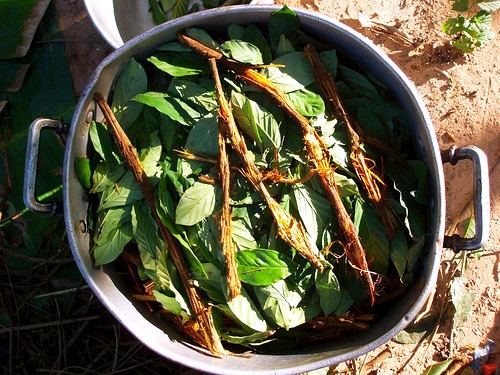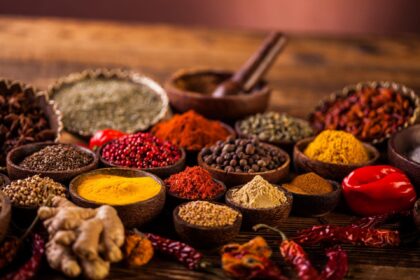
Stretching across nine countries and over three million square miles of land, the Amazon is not only the world’s largest rain forest, it is also one of the most biologically diverse regions on the planet. It’s home to over 300,000 plant breeds, 2,500 species of butterflies and 400 mammals. Even with these numbers, it’s estimated that only 40% of the total species in the Amazon have been discovered.
Even with all of the diverse wildlife, what really drew me to the Amazon was its human population.
History Of Indigenous Populations In The Amazon
People have been calling the Amazon rainforest home for thousands of years, gathering and cultivating forest plants, hunting native animals and living beneath the dense tree cover. While life in the rain forest was radically different from anywhere else on the globe, it proved to be a prosperous place for many South Americans and, before Christopher Columbus discovered the continent in 1498, countless native tribes called the forest their home, leaving the area densely populated.
However, things began to change once Europeans began arriving. In addition to recruiting locals as soldiers and slaves in their conquests, the Spanish and Portuguese also brought diseases such as small pox which, while usually not a life-or-death concern for those of European descent, proved to be fatal for large numbers of South Americans who had not grown up developing immunities to such maladies.

Role Of The Shaman
The high rates of fatality among smallpox victims did not reflect the levels of medical knowledge across the Amazon jungle, however. Even now, over 25% of modern pharmaceuticals are plant based, and the majority of these plants are native to the Amazon. In more than just a few cases, modern scientists have recruited the help of indigenous populations and their resident shaman to lead them to discover these plants.
While shamans and shamanism have played vital roles in communities for thousands of years all over the world, the term has still yet to receive a set definition. In essence, shamanism deals with reaching the spirit world by altering your state of consciousness, either through dreams or with the use of stimulating plants. Shamans are the tribesmen and women who are capable of reaching this state. With this, shamans are most often placed into their role after experiencing a spiritual event and are henceforth responsible for performing spiritual rituals in order to perform healings and divination.
In the Amazon, shamans perform rituals to induce physical and psychological healing for locals and medical tourists alike. The unique nature of their healing techniques has become increasingly popular worldwide and people from across the globe will fly and trek through the rainforest for various types of medicinal treatments.

Finding Spirits In The Jungle
While visiting a shaman — or even just the Amazon rainforest in general — can be unique, exotic and even enlightening, one thing that it is definitely not is easily accessible. After over 48 hours spent on international and domestic flights, in shuttle buses, jeeps and river boats and trekking up steep hills through thick jungles while enduring swarms of flies and red ants, I had finally reached the home of three men living along the Tambopata River in Peru’s Amazonian Madre de Dios region.
While the long journey seemed to have taken me back in time to an undeveloped land, the men I encountered appeared ordinary enough. With a working grasp of English and attire of casual t-shirts and jean pants, they could have been regular tour guides for our group of explorers; however, I knew these men had more to them than met the eye. After briefly explaining their workings and history under a thin, thatched roof, one of the Shamans turned to me and grinned mysteriously before slinking off down a narrow, winding trail through the jungle. At that moment, a breeze picked up over the unbearably humid day and a shiver ran across my neck. With a jump, I followed step and took off deeper into the jungle.

Taste-Testing The Amazon
After an immeasurable time spent walking through the dense Amazonian jungle, listening to distant cries of howler monkeys and gaping at not-so-distant giant insects, I was taken off guard when the Shamans stopped suddenly in front of a seemingly ordinary grouping of plants. However, the men soon moved aside to reveal signs with the words Chuchuhuasi and Uña de Gato printed on them. Once the group had assembled in a circle of curiosity, one of the shamans began explaining that Chuchuhuasi was used to cure illness caused by the body being overly energetic. This turned out to include everything from diarrhea to menstrual cramps by calming the over-activity. Even more curiously, he moved on to claim that he had seen Uña de Gato, or “cat’s claw”, as translated from Spanish, cure cases of AIDS and tumors before flashing that same proud but mysterious smile and bounding off once more into the jungle.
This time, I was prepared for the sudden stop in front of a plant labeled Sacha Bufeo. What I was not prepared for, however, was to have a piece of said plant suddenly thrust in my hand with the instruction to chew it. Feeling like I had already tumbled down the rabbit hole coming into the jungle, I decided I might as well give it a try. After a few bites, I felt a striking sensation in the roof of my mouth, followed by a contrasting numbness. Snickering at my sudden shocked expression, one of the shamans then revealed Sacha Bufeo was a natural anesthetic before vaulting off into the jungle once more.

The Ayahuasqueros
The shamans arrived at the final stop on our tour at a conversely slow saunter, casually mentioning that the plant that stood before us could not only perform “simple” healings like curing cancer, it could also transport its user across time and space, helping them relocate lost objects and memories and lift longstanding psychological shackles. The “vine of souls” plant, Ayahuasca, they explained, can only be consumed in liquid form after a period of fasting and bodily cleansing and a visit to several sacred sites to ensure the prospective user is fully prepared for the spiritual journey. Once the drink is finally consumed, the user experiences a series of visions, taking them to a high level of spiritual enlightenment.
The process of preparing the Ayahuasca drink and guiding others through the ritual is highly specialized, and shamans who are capable of performing it are known as Ayahuasqueros. It’s often this drink in particular that bring people halfway across the world, a voyage our ayahuasqueros assured me was well worth the trip as they recounted a tale of a depressed and cancer-stricken traveler, who, after partaking in the ritualistic Ayahuasca drinking, experienced visions that lifted her out her negativity. Upon returning to Europe and consulting her doctor, the woman was told she had a clean, cancer-free bill of health.
Despite tales such as this one, Ayahuasca has no proven medical benefits, and research is currently being done into the possible negative effects the hallucinogenic properties of the plant may have. As research is still in primary stages, the use of the plant remains controversial and only accessible in the remote jungles of the Amazon.
Making The Trek
If the Amazon is calling your name, there are several ways you can go about getting a tour set up with a Shaman. First, as most international flights into Peru arrive in Lima, you’ll need to book an additional flight from Lima to Puerto Maldonado. Taca Airlines provides reliable and friendly service to Padre Aldamiz International Airport and from there, if you book a 4-day Holistic / Ayahuasca Posada Amazonas trip from Amazon Adventures, they will have a guide pick you up from the airport and provide transportation directly to the Amazon.
Website: http://www.amazonadventures.com/
Email: [email protected]
About The Author
Currently working in a museum, Judi Zienchuk has lived everywhere from Southeast Asia to Northwestern Canada. She loves travel, longboarding and coffee flavoured ice cream. To get more personal, check out her blog, Travvel Sized.
Latest posts by Judi Zienchuk (see all)
- 5 Common Travel Practices That Are Detrimental For The Environment (And How You Can Easily Change Them) - Oct 7, 2017
- Gingerbread: History, Traditions And Where To See The World’s Sweetest Artwork - Dec 4, 2015
- The Dark Side Of Easter: Child Slave Labor And How To Source Ethical Chocolate This Holiday - Mar 16, 2015
- Tips For Giving Your Trip A Responsible Makeover - Mar 6, 2015
- Going Local In Sumatra, Indonesia - Oct 21, 2014





